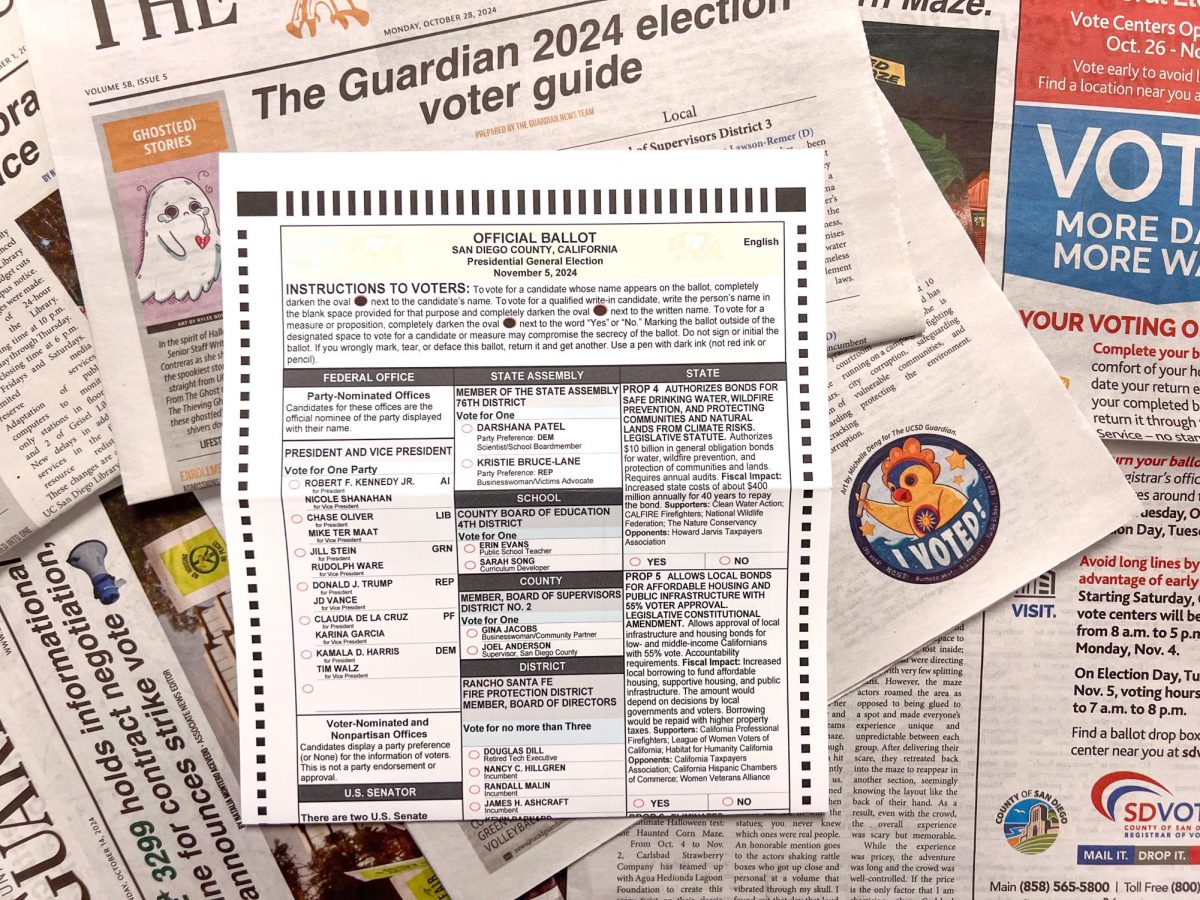Processing more than $27 billion worth of transactions in 2019 alone, Venmo has made spending and splitting much easier for college students. But how does the company make money and can it be trusted?
Everyday, hundreds of dollars are effortlessly exchanged across college students under the innocuous appearance of an endless stream of inside jokes. Humor so complex they are nearly impossible to decipher by any outsider. Monthly rent is paid among roommates with a poop emoji. Food trips around 3 a.m. are split with winky faces and smiles and people cannot seem to get enough of it. If you have ever needed a ride somewhere, had to split carne asada fries because you couldn’t finish them by yourself, purchased something homemade, or are between the ages of 18 and 30, you have most likely used Venmo.
Since its launch in 2009, the money-railing company Venmo has become one of the most popular money-transferring services, growing to serve over 40 million users as of 2019. The social media savvy app has more accounts created than that of some of the U.S.’s largest financial institutions such as Bank of America Corporation and Wells Fargo & Company. Not only is it beating banks in terms of usage, but Venmo stands out from their own competitors such as Square Inc.’s Cash App, which reported more than 15 million monthly active users.
Venmo began when co-founders and college friends Andrew Kortina and Iqram Magdon-Ismail were at a funk concert in Philadelphia in 2009. At the concert, the pair watched from a balcony and talked about the idea of sending money to other people just by using their phones because they were “too lazy” to go downstairs to tip the house band after a good performance, Magdon-Ismail said in an interview with Entrepreneur in 2016.
Flash-forward, the e-commerce company Braintree purchased the mobile payment service in 2012 for $26.2 million. PayPal then bought Braintree in 2013 for $800 million. Today, Venmo has processed more than $27 billion of transactions in 2019 alone.
Venmo allows you to get back that $5.75 for that boba your friend owed you that one time. Transactions are connected through friends, whether that be through your Facebook contacts or through your phone when you first sign up. Users can connect from their bank account or rely completely on a Venmo balance that they can transfer from a card or bank account. Transfer fees may occur when putting money back and forth between the balance and your debit card but free if directly connected to your bank account. Money sent or received can be as little as $0.01 or as much as $2,999.99 after confirming your account and identity. No more having to worry about leaving your wallet at home as long as one of your friends got it covered. No more wire transfers. No more waiting for transfers as Venmo charges come instantly. And if privacy is such a concern, Venmo allows for users to make transactions private from your social feed, allow for only friends to view, or publicly visible.
Venmo is especially popular among younger people and college students. Splitting Ubers and paying for squads of seven has never been easier. According to Statista, 82 percent of users of both PayPal and Venmo are between the ages of 18 and 34, with 50 percent of Venmo users to be 25 to 34–that is, millennials. In a recent survey by Sallie Mae and Ipsos, 86 percent of U.S. college students use mobile payment apps and as the top method of payment on campuses. Specifically, PayPal and Venmo are apparently the superior app of choice as they lead the pack ahead of Apple Pay, Samsung Pay, and Square Cash.
With all these numbers and net worth, and most often no transaction costs when linking directly to your bank account, how does Venmo make its millions? One way is through partnerships. Venmo partners with fast-food chains like Chiptole, White Castle, and food-delivery services like Munchery and UberEats where customers can pay directly from their Venmo accounts. Venmo would then take its standard cut of 2.9 percent, plus a small flat fee. This is at the higher end of what businesses pay for a typical credit-card transaction and of not just in-app purchases like these, but of in-person transactions at physical checkout counters, where customers spend trillions of dollars a year.
But what sets Venmo apart from other transfer apps like Zelle, Apple Pay, and Android Pay? It’s all in the social media feed. In an interview with The Atlantic, Richard Crone, who runs a payments-focused firm called Crone Consulting, claims that these businesses have greater incentives paying for the built-in advertising more than money the transferring service itself. “You walk into any retailer, any restaurant, any service provider— what do they want you to do? Like them on Facebook, follow them on Twitter,” Crone said. “Because the retailers spend far more trying to get you to like them on Facebook and follow them on Twitter and all these other things that they could just get as a byproduct of the payment.” In other words, friends seeing what their friends eat, even in the form of an emoji, increases business. This desire for social clout that already exists among us is now made a business for these fast-food chains as well as Venmo to profit off of.
Other money-transferring apps could, in theory, adapt to the business style of publicly viewable purchases, but could possibly risk the very base of their branding and purpose such as privacy. Zelle, for example, is another digital payment network that allows large transfers across banks such as Capital One, JPMorgan Chase, and Citibank. When it comes to banks, Crone says, there is an expectation for privacy and security, that is, to keep the nature of transactions confidential. Venmo is designated for public view. This makes the app more than a business based on money-railing and one built on user information. This has enabled Venmo to lead the pack of peer-to-peer money transfers, as other businesses can cash in on the personal data for where customers are spending their money. Other P2P services, where individuals are mutually and equally privileged participants in the application, such as Zelle are limited in their ability to partner with merchants and businesses with their reputation as a bank.
However, basing a business on such immediately available user data has its downfalls. Security issues have become a major topic of concern with the dramatically increasing number of users. Rent and utility payments, for example, can reveal who lives with whom. The timing of purchases can reveal one’s whereabouts and where they’re eating out and who they’re with. While the point may be to show off who’s hanging out with whom, the actual transactions may not be so secure.
Breaches in user security have put Venmo in hot water. The Federal Trade Commission launched an investigation due to complaints over the company’s privacy policies in 2016. One claim in particular was against an auto-friending feature that instantly pulled contacts from users’ phones. Another one pointed to a setting that made all transactions public by default. The FTC made the claim that Venmo should not inform users it offered “bank-grade security,” if it were not true. On the issue, FTC Chairman Maureen K. Ohlhausen noted that Venmo had “misled consumers about how to keep their transaction information private.” PayPal didn’t settle the FTC’s charges until 2018.
As of today, Venmo’s own website claims that the company offers bank-grade security and encryption to ensure the safety of accounts and their information. It also allows users to enable a multifactor authentication PIN code in the app. While Venmo itself may be apparently secure for keeping a balance directly from your card or bank, this does not inherently stop others from abusing the app.
Venmo scams are something that may be out of the company’s control as it offers no buyer or seller protection. According to Fast Company, as a payment service, Venmo is legally required to do its best to offer protection to prevent money laundering and fraud, but the service launched with rather weak regulations built into it. In its early days, Venmo had not even verified its users through proper identification like with a Social Security number or Tax Identification Number. This resulted in schemes like users creating more than one account and logging off when the account got into the red.
Before its acquisition by Braintree, scammers would hook up stolen credit cards to the app and cash out entire lines of credit. For example, one scammer would send a text message to Venmo users saying their Venmo account is about to be charged, and if they want to cancel the withdrawal they need to log on and decline it. Another popular scheme was for scammers to pay for purchases, and then pull the money back through Venmo right after the item shipped.
Such ploys are a worst nightmare for low-wage college students, such as for one UC San Diego global-health major. I asked for her thoughts about trusting Venmo with their transactions.
“No way. That’s why I didn’t even get Venmo for my first whole year [of college],” Roger Revelle College senior Mariela Martinez said. “But then it’s like, I was forced —forced— to use it because of my friends, where I used to just pay them in cash whenever we went out.”
While social media platforms may be more concerned with backlash about user data and information, Venmo must manage an even larger challenge: holding your bank account number. However, the appeal of the convenience of Venmo has pressured many, such as Martinez, to continue using these platforms, regardless of these concerns. The pressures of Venmo usage has made some to have no other choice but to compromise on the issue.
Security and data privacy have additionally become an issue for many top tech companies such as Facebook and Google. In what came to be known as the Facebook-Cambridge Analytica scandal, in early 2018 it was revealed that political consulting company Cambridge Analytica had harvested millions of people’s Facebook profiles without their consent for the purpose of political advertising. Following this data breach, Google ran into issues of its own when engineers had noticed a software bug that had led to over 500,000 Google+ users private data open to the public.
The purpose of these social media tools is to some extent use your information, your whereabouts, and what your interests are in order to optimize the service these companies provide to you. It seems we want to have these products made exactly for us, but to a blurred point that does not surpass the point of “creepy,” or at least malicious. And if it’s safe and protected by hundreds of engineers and developers working with our data, what is there to worry about? Many find bliss in this ignorance.
“I really do trust Venmo,” Thurgood Marshall College senior Faith Yi said. “It’s owned by PayPal, which I also use and they seem to put up a lot of protections to make sure their customers are safe.”
Where Venmo may make its best efforts with bank-grade encryption on transactional information to keep your data safe, social feeds, and whatever is put on public can still leave accounts susceptible to fraud. Convenience and connection comes with a price. However, these online platforms provide ways to ensure you can optimize your user experience.
Venmo continues to draw in more and more new users, making it increasingly more popular and convenient than other money-transferring competitors. While this also possibly means more scammers and hackers that can run awry and easily log off with your money without a trace, Venmo users can implement safety practices to prevent becoming a victim of fraud.
One option is to perhaps avoid making large transactions up to the thousands. Users viewing your feed are unable to see the exact dollar amount of each transaction anyway so maybe leave it to the banks for the heftier stacks. Another way is to always know who you are transacting with. Profiles may look similar so double-check if it really is your friend Tommy and not just someone who obscurely looks like him with the same username. Perhaps use indecipherable emojis to name your purchases so someone viewing your feed is not exactly sure what you’re up to.
There are many ways to keep you and your money safe. But people make mistakes and while Venmo can sometimes be liable for data breaches and privacy issues, users will always need to hold their own accountability when using these services, hence the need for terms and agreements. You did read those right? So really, if it is any concern to you, make sure to check your privacy settings.
Graphic by Susan Sun.









Joslyn • Jan 31, 2020 at 2:50 am
Thank you for sharing this article with very valuable information